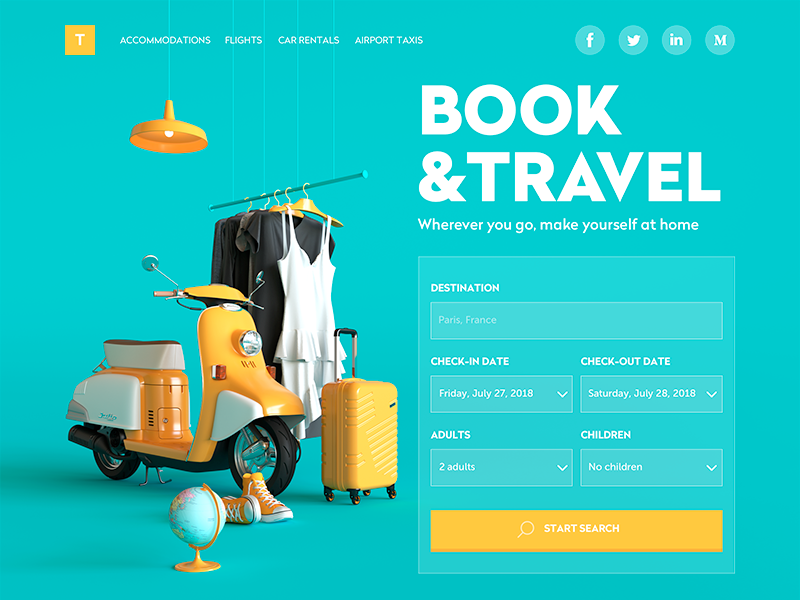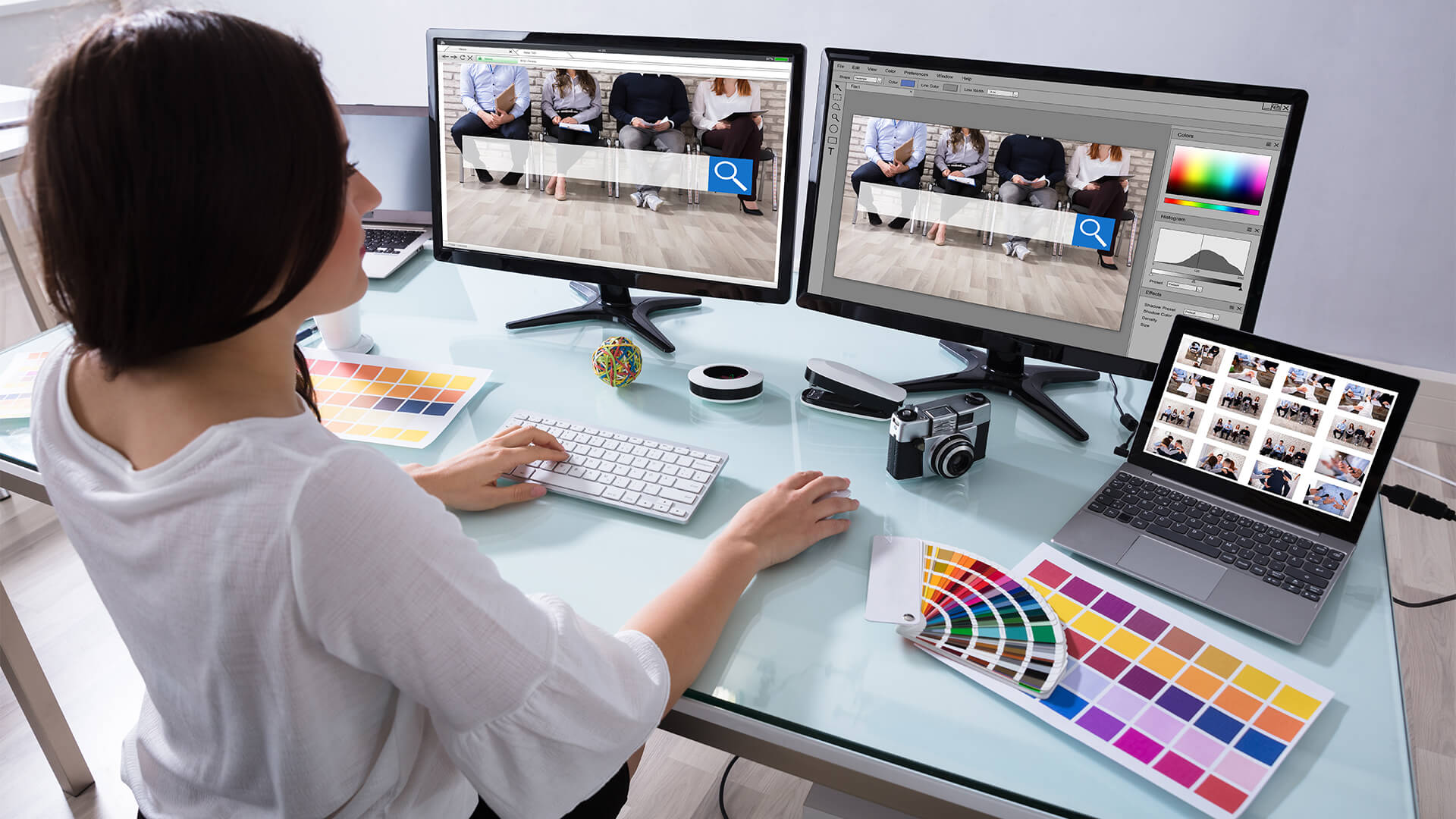The Very Best Kinds Of Web Layout to Improve User Experience and Interaction
In the ever-evolving landscape of digital communication, the effectiveness of Web style considerably impacts customer experience and interaction. Various layout techniques, such as minimalist, receptive, and interactive formats, each deal unique advantages that can cater to varied customer requirements.
Minimalist Web Layout
As electronic landscapes become increasingly cluttered, minimal website design has become a powerful technique to boosting customer experience. This layout viewpoint focuses on simpleness, concentrating on essential elements while eliminating unneeded disturbances. By making use of enough white area, simple navigation, and a limited shade scheme, minimal design cultivates clearness and guides individual interest to essential content.
The core principle of minimalist Web style is to develop a smooth interaction for customers. By minimizing cognitive load, customers can quickly comprehend details without really feeling bewildered. This straight strategy not only improves functionality yet additionally encourages interaction, as visitors are more probable to discover a site that is easy and aesthetically enticing to navigate.
Furthermore, minimalist layout commonly stresses typography and images, using these components strategically to convey messages effectively. In significance, minimal Web design is not simply a pattern; it is a thoughtful technique that acknowledges the value of user-centered style.
Receptive Website Design
In today's diverse electronic environment, responsive Web design has ended up being necessary for developing a seamless user experience throughout a wide range of devices. As customers access web sites on mobile phones, desktops, laptops, and tablets, the capacity of an internet site to adjust its format and content to various screen sizes and resolutions is vital.
Responsive Web style utilizes flexible grids, images, and CSS media queries to make sure that Web content exists efficiently, despite the tool made use of. This method not just improves the aesthetic charm of an internet site however additionally substantially improves usability. Individuals are more probable to involve with a website that provides a constant experience, as it eliminates the frustration of having to zoom in or scroll excessively.
Additionally, online search engine, including Google, focus on mobile-friendly websites in search positions. By adopting responsive layout, services can improve their visibility and get to a wider audience. This method additionally simplifies internet site upkeep, as a single version of the site can cater to all tools, lowering the need for numerous versions. In summary, responsive Web layout is a fundamental technique that enhances customer experience, engagement, and general complete satisfaction.
Interactive Website Design
Receptive Web layout lays the groundwork for improving customer experience, however interactive website design takes this a step better by engaging users in a much more vibrant means - Aligned Position Web Design. By including components such as animations, clickable models, and real-time responses, interactive website design mesmerizes individuals, attracting them right into a richer surfing experience
This strategy not only fosters engagement however likewise motivates individuals to check out material proactively instead than passively eating it. Strategies such as gamification, where customers gain incentives for finishing jobs, can considerably enhance the time invested in a site and improve overall complete satisfaction. Additionally, interactive functions can streamline complicated info, making it a lot more absorbable and satisfying.

Incorporating interactive style elements can likewise bring about greater conversion prices, as individuals are most likely to engage with a Get More Information site that proactively involves them. Aligned Position Web Design. Eventually, interactive website design changes user experiences right into remarkable journeys, ensuring that site visitors return time after time
Flat Style
Defined by its minimalistic technique, level layout stresses simpleness and capability, removing unnecessary components and concentrating on necessary functions. This design philosophy focuses on usability, guaranteeing that individuals can browse user interfaces with simplicity and performance. By utilizing a tidy visual, flat style gets rid of the clutter typically discovered in a lot more elaborate styles, thus improving customer emphasis on material and functionality.
The hallmark of flat layout exists in its usage of bold shades, easy typography, and geometric shapes. These components add to an aesthetically attractive interface that is both modern-day and approachable. Furthermore, flat layout promotes a sense of clarity, allowing users to recognize necessary actions and information without distraction.
Additionally, flat design is especially efficient in responsive Web layout, as its simpleness translates well across numerous tools and display sizes. By concentrating on vital attributes, level design not just satisfies individual demands but also motivates smooth communication, making it an important element of effective Web navigate here layout strategies.
Adaptive Website Design
Adaptive Web style personalizes the customer experience by developing numerous fixed designs tailored to different screen sizes and gadgets. Unlike receptive design, which fluidly readjusts a solitary format, flexible layout uses distinctive layouts for certain breakpoints, making certain optimum discussion on numerous systems. This strategy permits developers to concentrate on the one-of-a-kind features of each tool, boosting use by supplying specifically what users require based on their context.
Among the key benefits of adaptive Web layout is its capacity to maximize tons times and performance. By serving customized web content and photos that fit the individual's gadget, sites can reduce data use and enhance loading speeds. This is particularly advantageous for users with slower links or minimal data strategies.

Additionally, adaptive layout facilitates a much more controlled and constant branding experience. Considering that developers create several formats, they can ensure that the visual components align with the brand's identity throughout various systems - Aligned Position Web Design. This results in a natural customer experience, boosting engagement and promoting individual retention
Verdict
Minimalist design cultivates clearness and focus, while responsive layout makes certain flexibility throughout different devices, promoting accessibility. Jointly, these style approaches contribute to the production of easy to use atmospheres that not only boost fulfillment however also drive greater conversion prices, highlighting their crucial importance in contemporary Web layout approaches.

Minimal layout cultivates quality and emphasis, while receptive style ensures adaptability across various devices, promoting availability. Jointly, these style approaches add to the development of easy to use atmospheres that not only enhance fulfillment yet likewise drive higher conversion rates, underscoring their crucial significance in contemporary Web layout approaches.